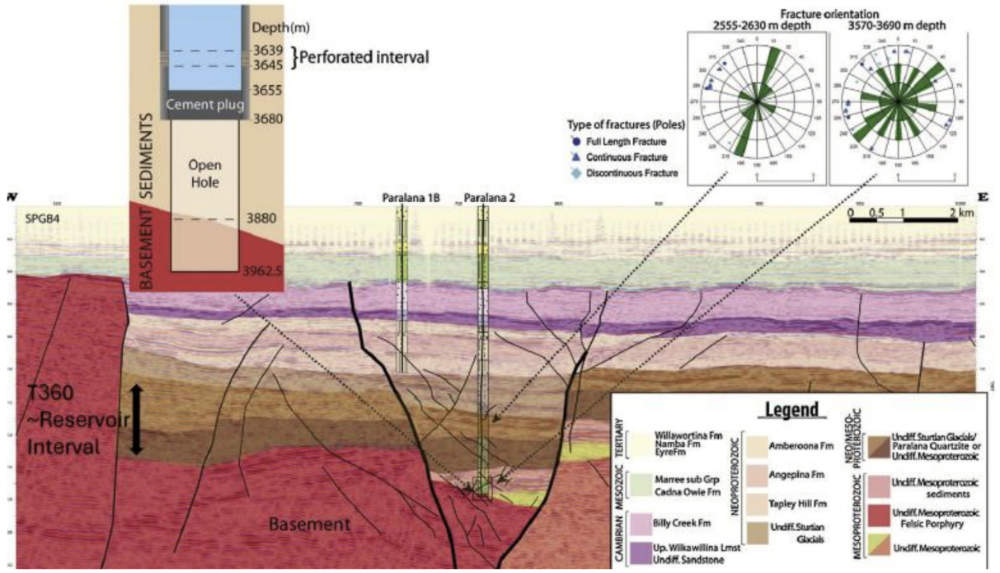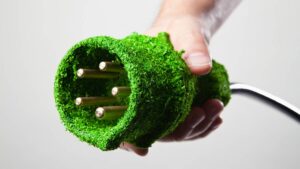Earths Energy study identifies Paralana as top pick for geothermal development

Early studies at Earths Energy's (ASX: EE1) Paralana geothermal energy project in South Australia is providing a wealth of encouragement.
- Earths Energy feasibility study finds that Paralana is suitable for enhanced geothermal system development
- Paralana found to have favourable permeability and the right horizontal well drilling stress environment for EGS implementation
- TEFS will now focus on Paralana as the nearest term development option
Special Report: The first phase of Earths Energy’s Techno-Economic Feasibility Study (TEFS) has independently found that its Paralana project in South Australia is suited for enhanced geothermal development.
Australia’s first wave of hot rock geothermal activity had identified Paralana and Flinders West (the other project covered in the study) as being amongst the most prospective sites in the country, which neatly accounts for the roughly $40m that has been spent, historically, on their fieldwork and studies.
Paralana is about 300km northeast of Port Augusta and was one of the most advanced enhanced geothermal system (EGS) plays with measured bottom hole temperatures of 171C with a temperature gradient of 46C per km of depth, ~1.84x the Australian average.
Flinders West also saw previous work with drilling reaching a depth of 1934m and encountering bottom hole temperatures of 85C along with a high gradient of 43C per km.
These hot rocks are not going anywhere and an initial market assessment carried out by Earths Energy (ASX:EE1) found that the large proportion of installed renewable generation in South Australia meant that geothermal’s ability to provide reliable baseload power allowed it to capitalise on peak wholesale power prices.
All the positive signs led the company to expand the scope of the initial techno-economic assessment conducted by energy consulting business GLJ into a far more comprehensive TEFS.

Paralana ranked the priority target
The initial phase of the TEFS has now confirmed what the company has suspected all along – that Paralana has favourable characteristics for an EGS development similar to those being commercialised at scale in the US.
It highlighted favourable permeability at Paralana, where zones of existing fractures have been interpreted from borehole image data and micro seismic monitoring during stimulation below the 150C isotherm depth in the historical Paralana-2 well.
Additionally, in-situ stress fields with a principal horizontal stress approximately in the E-W direction were observed above the target depths, which appear to provide a favourable horizontal well drilling stress environment for EGS implementation.
The study also found that Flinders West requires additional subsurface evaluation and potentially exploration drilling to further derisk its EGS potential.
“GLJ’s preliminary findings affirm our belief in Paralana’s potential as an enhanced geothermal system project. Independently validating Paralana’s permeability and stress conditions for EGS development is both significant and valuable,” chief executive officer Josh Puckridge said.
“Momentum around EGS is building, spurred by pioneering successes in the USA, where projects in Nevada and Utah are setting the stage. Paralana stands alongside these leading efforts, and our collaboration with GLJ will showcase this further.
US ESG commercialisation lends confidence
EGS systems inject cool water (or other geo-fluids such as liquid CO2) down through the injection well where it interacts with the hot dry reservoir and builds pressure.
As the pressure and heat of the fluids increase, they are channelled through the production well and brought to the surface where the resulting steam expands to power a turbine that generates electricity. The newly cooled water is then re-injected to repeat the cycle.
This process is enhanced by the use of horizontal drilling, which increases heat and pressure build up in the reservoir by increasing the surface area of the geo-fluids interacting with the hot dry reservoir.
Highlighting just how far EGS has come in the US, utility-scale developments such as Fervo Energy’s >400 megawatt Cape Station project in Utah are currently underway.
Next steps
Work on the TEFS will now focus on developing reservoir simulations, cost estimation for well design and surface facilities, and economic modelling for the Paralana project with finalisation on track for late December 2024.
This should further de-risk the project and provide a clear commercialisation pathway while making clear EE1’s position on the development curve.
The company will also look at options to firm up the subsurface data available for Flinders West, including collaboration with other groups in the area.
This article was developed in collaboration with Earths Energy, a Stockhead advertiser at the time of publishing.
This article does not constitute financial product advice. You should consider obtaining independent advice before making any financial decisions.
Related Topics
UNLOCK INSIGHTS
Discover the untold stories of emerging ASX stocks.
Daily news and expert analysis, it's free to subscribe.
By proceeding, you confirm you understand that we handle personal information in accordance with our Privacy Policy.








